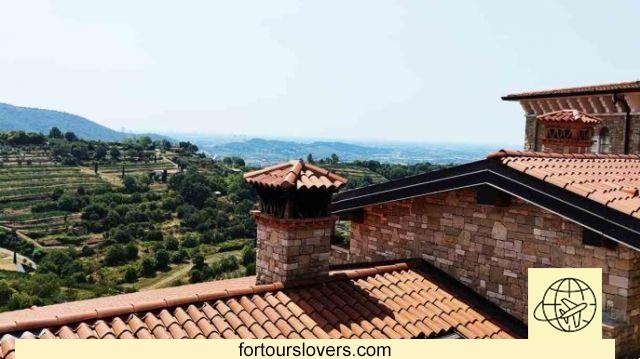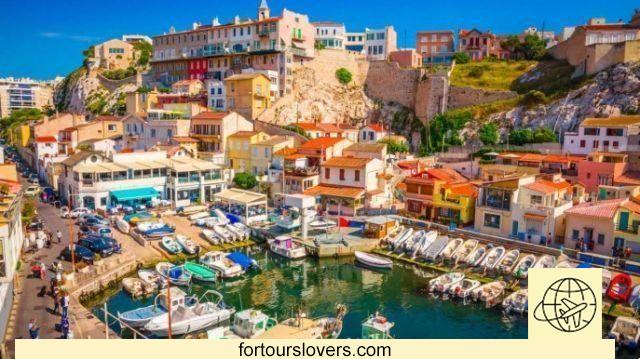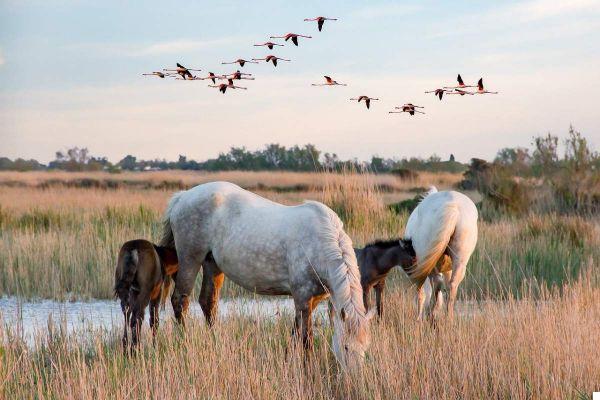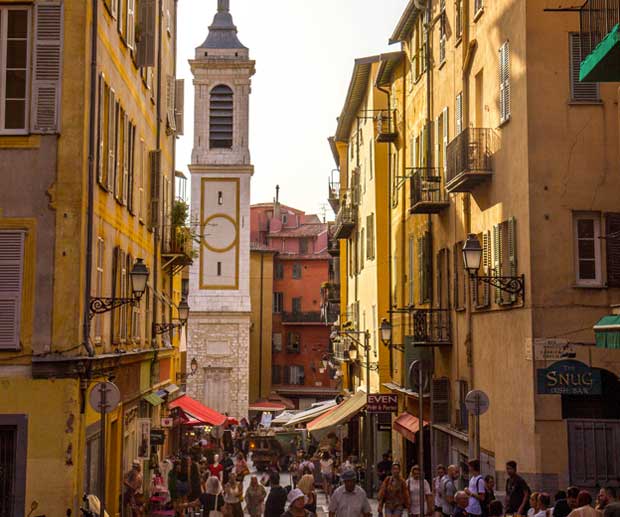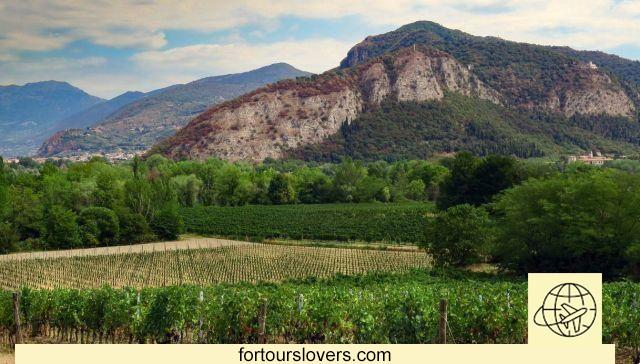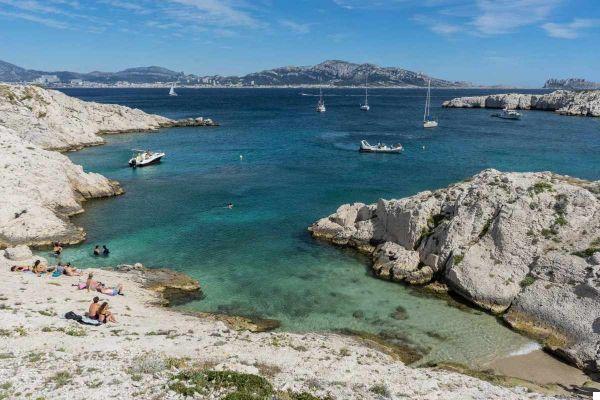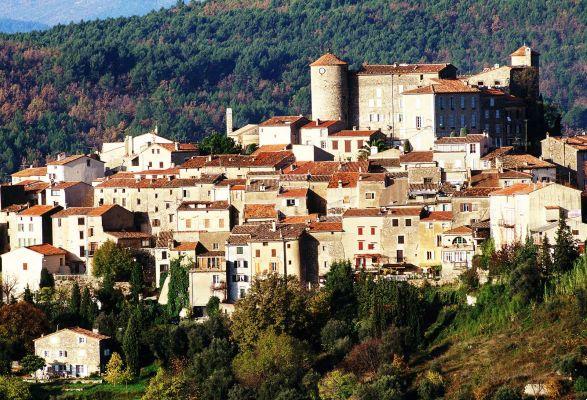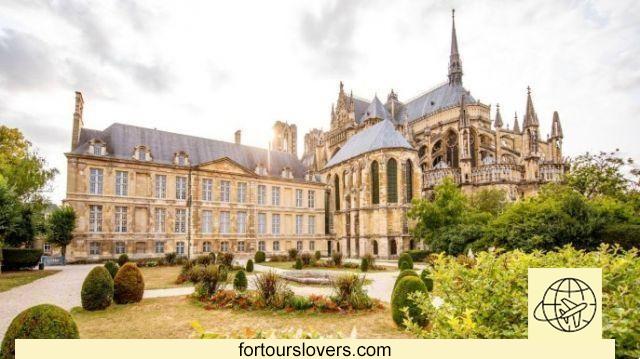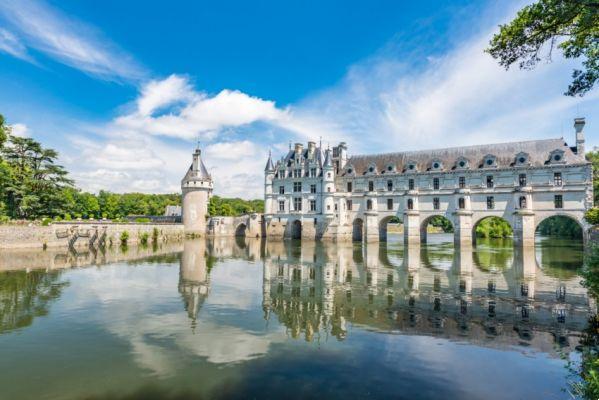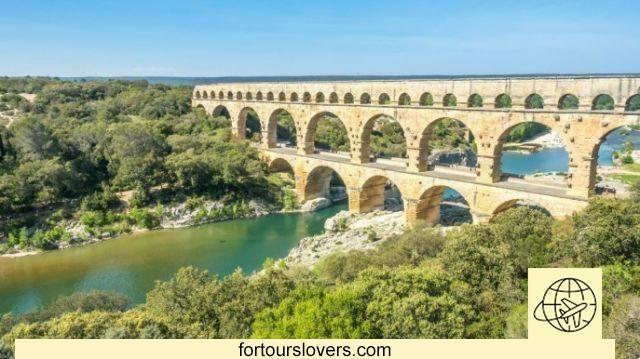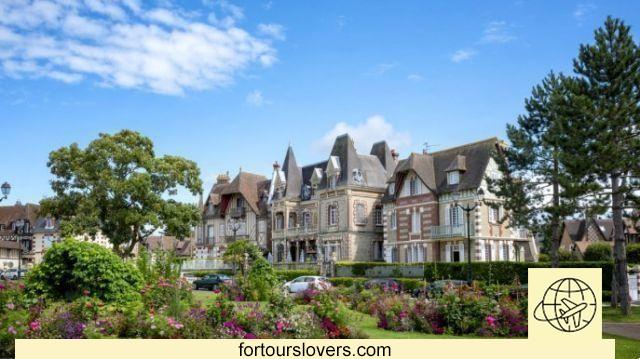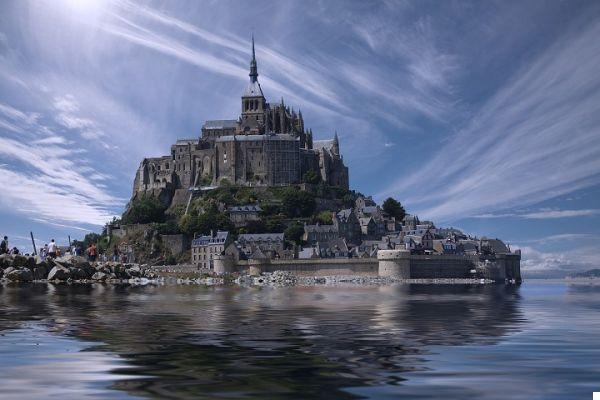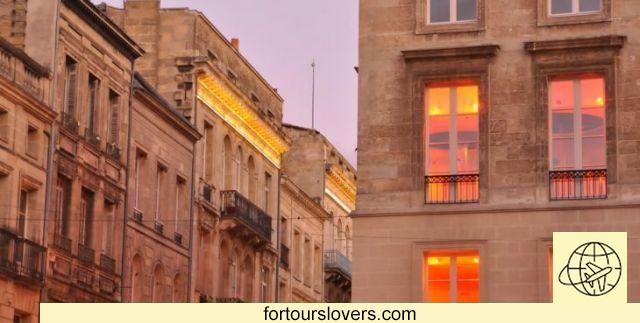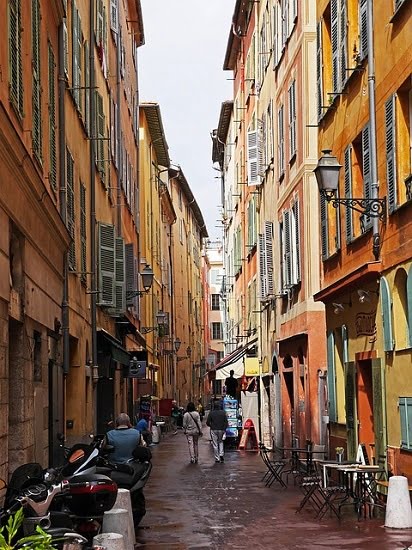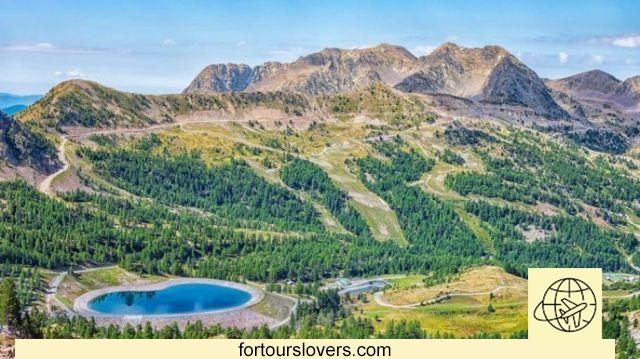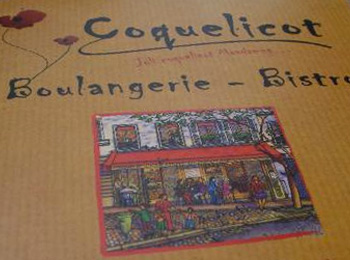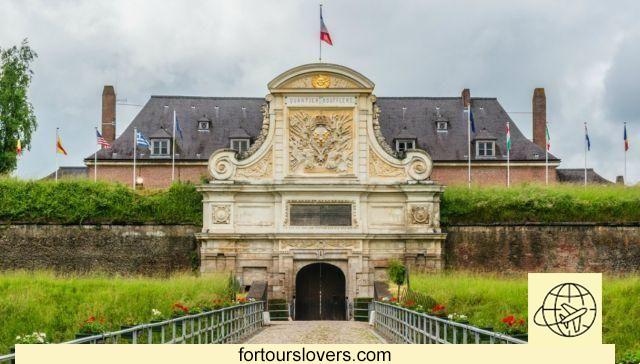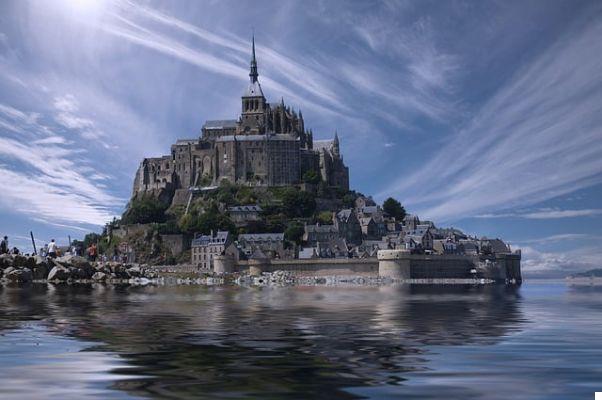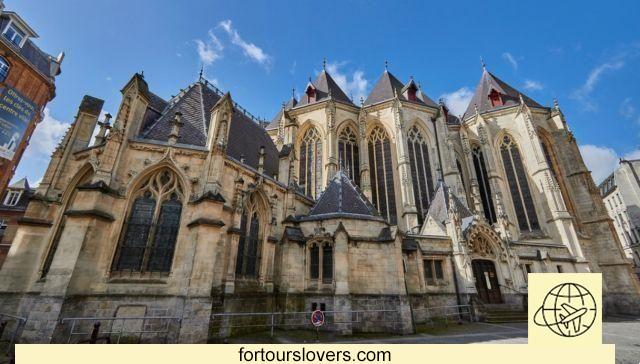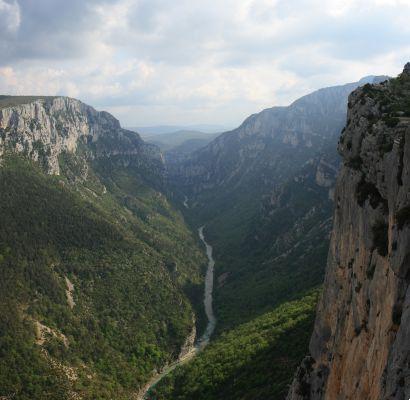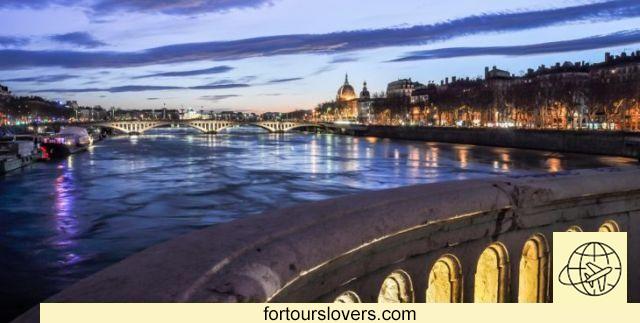
Lyon
13 things to do and see in Lyon and 1 not to doCan a city simultaneously add i advantages of the province and those of the large urban center? If you think not, it's because you haven't visited Lyon. What counts is the demography (approx. 500.000 inhabitants) but, even more, the geographical position in the heart of France, halfway between Nice, Marseille and Paris and a few hours from Turin. It's not over because Lyon has many other arrows in its bow: history, culture e gastronomy are the asset on which the city has built its own in the last twenty years tourist success. More precisely since 1998, the year in which theUNESCO international convention against doping in the sport has placed under his tutelage, declaring them World Heritage Site, the historic districts of Fourviere, Vieux Lyon, Croix Rousse e Presqu'ile. Don't miss the Festival of Lights which from 7 to 10 December attracts thousands of tourists to Lyon. It is an ancient custom, dating back to the mid 600s, resulting from a vow made to the Madonna to protect the city from the plague. Since then, on the occasion of the feast of the Immaculate Conception, the Lyons have decorated the windows of their houses with candles and stained glass windows, while the municipality has provided the lighting of all the main city monuments (more info: www.fetedeslumieres.lyon.fr). Below we see together the main attractions of the city. Happy reading.
1 Roman Theater
The visit of Lyon can only begin with Fourvière hill which, in addition to giving a magnificent view, houses some of the main sites of historical and cultural interest in the city. First of all the Théatre Romain, absolutely the oldest place in Lyon and, in fact, the main testimony of the Roman domination dating back to the first century. to. C .. To be precise at 43 a. C. year in which the Romans founded Lugdum, literally the fortress of the god Lúg, warrior deity worshiped by the Celtic peoples of Gaul. The amphitheater, which in its heyday came to accommodate about 10.000 spectators, is flanked by another smaller one, which could instead host approximately 3000 spectators, for a total of 13.000 people used to spending their days among the watching comedies and listening to music and poetry. Overlooking the amphitheater, a archaeological Museum with a considerable amount of finds from the Gallo-Romanesque period. The Musée de la Civilization Gallo-Romain respect the following visiting hours:
| Days | Working Time |
| Mon | closed |
| Tue - Fri | 11:00 18:00 |
| Sat - Sun | 10:00 18:00 |
For more information on history, prices and methods of visit consult the place: www.museegalloromain.grandlyon.com (English version available).
2 Basilica of Notre Dame de Fourvière
La Fourvière hill not only bears traces of Roman domination, but is also the spiritual and religious center of Lyon, to the point of having been renamed "The hill that prays" for the presence of several churches, among which the two most famous are the Notre Dame Basilica and Saint Jean Cathedral (see point 3). The Basilica was inaugurated in 1872 to dissolve a precedent vow made to Our Lady so that the city was spared from Franco-Prussian conflict. The presence of 4 crenellated towers on each side of the structure, at first glance it makes the building seem more like a fortress than a church. The redundancy of interior decorations (mosaics, capitals and stained glass windows), with the sole exception of the crypt dedicated to San Giuseppe, instead fully testifies to the orientation of the sacred art of the late nineteenth century. Absolutely to do there climb to the roof of the basilica which offers a magnificent view of the city. Also worth seeing in the immediate vicinity is the Museum of Fourvière with the basilica's treasure and numerous other finds of sacred art on display. For more information on visiting hours of the church, the roof and the nearby museum visit the place: www.fourviere.org (English version available).
3 Cathedral of Saint Jean
Located at the foot of the Fourvière hill, in the other historic district of Vieux Lyon (trad. Old Lyon), the Cathedral of Saint Jean (Saint John the Baptist) and Saint Etienne (Saint Stephen) contend with the Notre Dame Basilica for the primacy of the most important religious building in Lyon. The church, built between the XNUMXth and XNUMXth centuries, represents a very interesting example of transition from Romanesque to Gothic. The Romanesque part is the one around the main apse and then progressively passes to the Gothic one as it approaches the external façade where the rose window that surmounts the three entrance portals stands out. Inside, however, theastronomic watch which is located at the intersection of the central nave and the right transept. The peculiarity of this clock, built in 1598 by Nicolas Lippius, consists in having been perfectly calibrated until 2019, so as to allow it the exact indication of the sun and the moon according to the reference parameters of the XNUMXth century. It must be said, however, that the clock may not be visible. The interior of the Cathedral, in fact, is the subject of an impressive restoration campaign that could compromise the visit of some parts of the building. In any case, the Lyon Cathedral remains unmissable stop on a visit to the city. For visiting days and times, consult the table.
| Days | Working Time |
| Mon - Fri | 08:15 19:45 |
| Sat - Sun | 08:15 19:00 |
4 Traboules
The Vieux Lyon district owes its popularity not only to the presence of the Cathedral, but also to that of the traboules, close pedestrian crossings that connect different roads passing inside buildings and private courtyards. Of traboules - from the Latin "Transambulare" (trad. To cross) - there are also in Croix Rousse and in other areas of Lyon, but the most famous and popular are undoubtedly the paths around Rue Saint Jean, a few steps from the cathedral just mentioned. There are several reconstructions on the origin of this architectural element: there are those who trace their invention to the inhabitants of Lugdum forced to abandon the hill of Fourvière due to difficulties in water supply and consequently to move along the banks of the Saona, one of the two rivers (the other is the Rhone) that bathe Lyon. The construction of houses on both sides of the canal would have suggested the creation of useful shortcuts to bypass the river. What is certain, the traboules came in handy when, throughout the Renaissance, the silk processing it became the main economic activity of the Lyons. Transporting the precious raw material away from atmospheric agents and other urban obstacles constituted an undoubted competitive advantage that contributed to making the city one of the most important silk production and distribution centers in the world. Today remains the tourist charm of these places. Charm that, however, has to deal with right to privacy of the people who live along the lines of passage of the traboules. For this reason it is advisable to consult the list of traboules of Lyon, taking into account, however, that some may be closed at the time of the visit.
5 Mur des Canuts
“The hill that prays”, we have seen, is Fourvière. "The hill that works"instead, it is Croix Rousse, a working-class district common in its own right for centuries, merged with the rest of the city in the XNUMXth century after the medieval walls were demolished. Croix Rousse owes its popularity to canuts, the silk processing workers during the nineteenth century protagonists of various social struggles for the improvement of working conditions and wages. These workers, in fact, lived inside large apartment blocks, and the work environment coincided with the houses that had very high perimeter walls to house the large looms necessary to work the raw material. A'sui generis architecture that makes the pair with traboules just remember. But there is another detail that makes Croix Rousse's visit indispensable. We refer to the Mur de Canuts, the largest mural in Europe, located between Boulevard des Canuts and Rue Denfert Rochereau. The painting depicts the neighborhood itself with its buildings, streets and inhabitants. A gigantic work, over 1000 square meters, which over the years has undergone several retouching to keep it up to date with the changes of an area that from proletarian has become bohemian. To be seen!
6 Bellecour Square
Many guides bring at the top of the list of things to see Place Bellecour. There are two reasons for the primacy: the first is that in fact it is one wonderful square, one of the largest in France and all of Europe; the second reason, however, is that Place Bellecour is main hub to Republic street, Rue Victor Hugo e Rue de President Edouard Herrier, three of the main city streets, each with a high concentration of shops, museums and monuments. In fact there is also a third reason: Place Bellecour, in fact, is the main meeting place of the young Lyons usually meet near the equestrian statue of Louis XIV. What we see, however, is the second statue dedicated to the Sun King, as the first was destroyed during the French Revolution. It's not over, because always in Place Bellecour, there is also there statue of Antoine de Saint-Exupéry, French writer, born in Lyon, whose most famous literary work, translated all over the world, is without doubt The little Prince. In short, nothing prevents you from starting your visit to Lyon from this square, about a kilometer from the other and equally famous, Place des Terraux (see next point).
7 Terraux Square
Place des Terraux is located at Presqu'ile center peninsula extending between the Rhone and the Saone, the two rivers that cross Lyon. In many respects it is the heart of the city, a privileged hub from which to reach the many Lyon attractions. Some of which already meet in the square, such as theHotel de Ville, the city hall, and especially the fountain by Auguste Bartholdi, a French sculptor whose fame is linked to the Statue of Liberty, the monument at the entrance to the port of New York. Not far away, however, we find the Musèe des Beau Arts (see next point), one of the most important in all of France, born on the impetus of expropriations to the detriment of the nobles immediately following the French Revolution. Finally a piece of advice. Place des Terraux is particularly suggestive in the evening, fully illuminated and full of tourists and residents. If you like the nocturnal atmospheres, to live and photograph, you are in the right place. Not to be missed!
8 Museum of Fine Arts
Located within aXNUMXth century abbey (Abbaye de Dames de Saint Pierre), Museum of the Beaux-Arts of Lyon is one of the most important museums in all of France as well as in Europe. It hosts a very rich collection that ranges from painting, To sculpture, All 'archeology up to numismatics. The collection of museum finds began in 1792 with the expropriation of the rich private collections of the Lyonnais aristocrats frightened by the advance of the French Revolution (the same convent that houses the Museum was suppressed following the events of 1789). These first finds were later joined by those stolen around Europe by Napoleonic troops, up to the donations of the second half of the 900th century by private collectors. It is not over because the Museum of Fine Arts in Lyon also houses a large section dedicated toancient art where, alongside i Gallo-Romanesque finds, find space for finds dating back toEgyptian era and that Greek. The Museum of Fine Arts of Lyon respects the following orari di apertura:
| Days | Working Time |
| Monday | 10:00 18:00 |
| Tuesday | closed |
| Wednesday | 10:00 18:00 |
| Thursday | 10:00 18:00 |
| Friday | 10:30 18:00 |
| Saturday | 10:00 18:00 |
| Sunday | closed |
For more information on the history, collections, prices and methods of visiting consult the Official site: www.mba-lyon.fr (Spanish version available).
9 Museum of the Confluences
Remaining on the subject of museums, one cannot fail to mention the Musèe des Confluences, the latest flagship of Lyon, inaugurated in 2014. The Museum is located at the exact confluence of the Saone and the Rhone, hence the name. Confluence, however, also means something else: for example, hybridizing scientific and humanistic knowledge in order to enrich the different museum itineraries which, in this case, all deal with the history of humanity: from the different interpretations on the origin of the Universe, to the connected themes of death and the afterlife, passing through the relationship between man and animal , up to the equally complex one between migration and territory. In the Museum of Confluences in Lyon these topics are addressed in a manner multidisciplinary drawing onarcheology, All 'anthropology and natural history. In short, we are in the presence of an incredible variety of objects, moreover housed in one futuristic structure made with metal and glass. Not to be missed!
For the orari di apertura see the table:
| Days | Working Time |
| Monday | closed |
| Tuesday | 11:00 19:00 |
| Wednesday | 11:00 19:00 |
| Thursday | 11:00 22:00 |
| Friday | 11:00 19:00 |
| Saturday | 10:00 19:00 |
| Sunday | 10:00 19:00 |
For more information visit the place: www.museedesconfluences.fr (Spanish version available).
10 Lumière Museum
Among the many firsts of Lyon there is also the movies. Or rather, the fact that the inventors of what would later be defined "Seventh art", Auguste and Louis Lumière, they were both originally from the city. The museum, just over 3 kilometers from Piazza Bellecour, collects the main inventions of the two brothers, good at taking advantage of the wealthy condition inherited from their father Antoine, himself an entrepreneur and photographer, to experiment and deepen their research. Opened in 1982 on Musèe Lumière it is located inside one of the family villas and is spread over 4 levels for a total of one twenty rooms. Vintage cameras, the very first films, and a whole series of other objects used in thecinematographic industry of the late nineteenth century are collected within this museum space which is a must for everyone cinephile self-respecting. The visit, however, is also suitable for those who are not very passionate about cinema: the museum layout, in fact, is designed specifically to interest and excite even the layman. To be seen!
For the visiting hours consult the table:
| Days | Working Time |
| Mon | closed |
| Tue - Sun | 10:00 18:30 |
More information on Official site: www.institut-lumiere.org.
11 Museum of Contemporary Art
Among the many museums in Lyon, the <a href="https://en.wikipedia.org/wiki/Chord_(aeronautics)" data-type="URL" data-id="https://en.wikipedia.org/wiki/Chord_(aeronautics)" target="_blank" rel="noreferrer noopener">MAC</a>, the Museum of Contemporary Art a stone's throw from the Parc de la Téte d'Or, the largest public park in the city (see next point). We are on Rive Gauche (left bank of the Rhone), the modern part of Lyon: a mostly residential area but not without places of tourist and cultural interest. One, in fact, is the Musée d'Art Contemporain, designed in the mid 90's byItalian archistar Renzo Piano. The peculiarity of this museum is that it does not host any permanent ones. On the contrary, it was conceived to adapt from time to time to the exhibitions of different artists. In other words, the interior of the museum is modular, which is why the structure remains closed between one temporary exhibition and another. For this reason it is advisable to consult the official website of the museum, in order to be updated on the current activities: www.mac-lyon.com (Spanish version available).
12 Parc de la Téte d'Or
After so many museums we are enjoying a few hours of leisure in largest public park in the city. It is here that the Lyons, for more than a hundred years (the park was inaugurated in 1861) have loved to spend their free time doing sports or simply relaxing in the open air. Over the years the park - so called because according to a legend the Crusaders buried a treasure there, including a golden head of Jesus (Téte d'Or) - has undergone several extensions and modifications. The first was it zoo, inaugurated in 1865, but which in the last 10 years has significantly expanded; then the Botanical Garden, and above all the great one rose garden of over 5 hectares. There is also a large space at activities for children that, from the little train to the mini karts, to the ponies up to the mini boats, certainly have to enjoy. In short, the Parc de la Téte d'Or it is another unmissable stop in Lyon, especially if you are traveling with children in tow. Not to be missed!
More information on Official site: www.loisirs-parcdelatetedor.com (English version available).
13 What to eat in Lyon
Some have rightly observed that at least half of a holiday in Lyon should be spent at the table. And this regardless of the resources available: the gastronomic capital of Francein fact, it pleases everyone from the sophisticated nouvelle cousine to the more traditional plugs. The latter, Spartan rooms with checkered tablecloths, or even simpler wooden benches, are particularly interesting both from a historical and a culinary point of view. Historically they testify the commissioning of the servants for centuries in the employ of nobles and great bourgeois. A very evident phenomenon at the turn of the nineteenth and twentieth centuries and contemporary tonumerical rise of the canuts, the workers dedicated to the processing of silk of which we spoke previously (see point 5). As for the gastronomy, however, the peculiarity of these places consisted in the ability to readjust the court kitchen to the changed economic and social conditions, creating a perfect compromise between elegance of dishes and more or less "poor" ingredients. Having clarified these aspects, we come briefly to the dishes: from the classic salade lyonnaise (green salad with croutons, bacon and poached eggs), al gateau de foies devolaille (chicken livers with potatoes and tomato sauce), passing through the andouillettes (sausages from the stomach and intestines of pork), up to the different ways of preparing Tripe it is the meat, not just pork, that is the star of the Lyonnaise cuisine. Meat and cheese, including the Cervelle de canut, fresh cheese widely used in combination with salad and potatoes, or spread on croutons.
1 Watch out for the risks of nightlife
Lyon is a safe city. It has had a for years efficient camera system which has greatly reduced the problems of public order in the old and more touristic part of the city. The situation is different in the suburbs which here, as in the other large French cities (Paris, Marseille, Nice, etc.) present cases of marginalization and degradation on which crime thrives. Returning to the touristic part of Lyon, there are no real dangers: at most beware of alcohol excesses, sometimes causing fights outside the premises. In addition to not overdoing it, and to keep away from those who overdo alcohol, it is advisable to follow the normal anti-horse precautions: how to avoid keeping your wallet in the back pocket of your pants; do not run with a lot of cash; do not leave the bag open or unattended etc.




